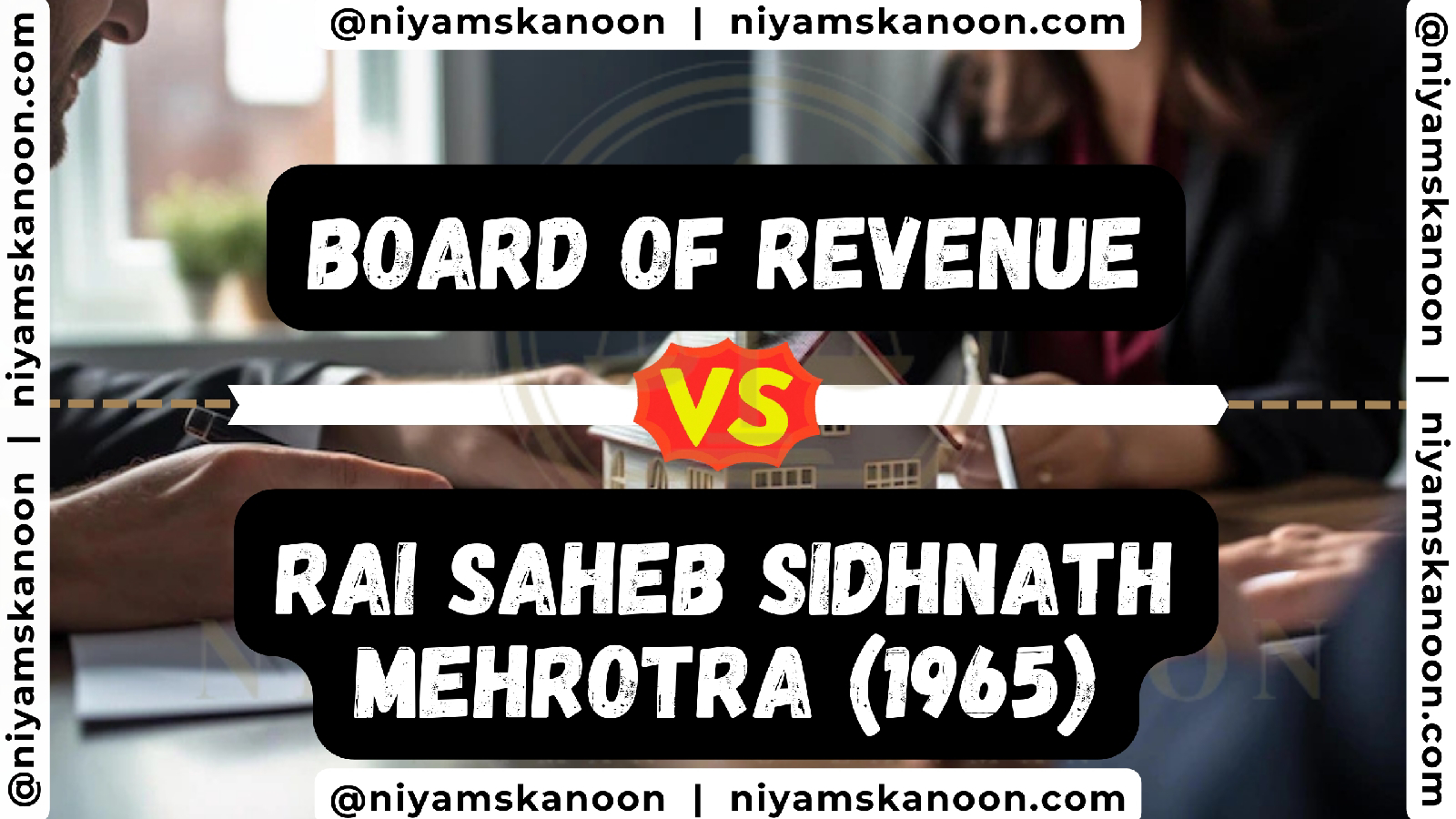Board of Revenue v. Rai Saheb Sidhnath Mehrotra, (1965)
Introduction of the Case
The case of Board of Revenue v. Rai Saheb Sidhnath Mehrotra (1965) examines the interpretation and applicability of Section 24 of the Indian Stamp Act, 1899, particularly in situations where a property is sold subject to an existing mortgage.
Facts of the Case
- The sellers had taken two plots of land on lease and constructed industrial structures including an oil mill, ice factory, and cold storage unit.
- These properties were mortgaged to the Chartered Bank of India to secure a loan of Rs. 10 lakhs.
- To repay this loan, the sellers sold the property (comprising both movable and immovable assets) to the Oil Corporation of India Ltd. for Rs. 5,55,000.
- Out of this, only Rs. 1 lakh was shown as consideration for the immovable property, as per the executed sale deed.
- The bank agreed to release its charge over the property if Rs. 5 lakhs was paid.
- As per the arrangement:
- The seller agreed to pay Rs. 11,000 to the bank.
- The buyer had already paid Rs. 3,89,000 to the bank before the sale deed was executed.
- The remaining amount from Rs. 5 lakhs was related to movable property or already settled.
Issue Before the Court
- Whether the amounts paid by the buyer directly to the bank (prior to the sale deed) and other related payments should be considered as part of the sale consideration under Section 24 for the purpose of calculating stamp duty.
Case History
- The Board of Revenue argued that all payments made towards the mortgage whether directly by the buyer or by the seller were part of the purchase price and should be included in the stamp duty calculation.
- The matter was referred to the High Court, which rejected the Board's argument and held that only Rs. 1 lakh, as stated in the sale deed, should be considered for stamp duty under Section 24.
Supreme Court’s Ratio Decidendi
- The Supreme Court held that Section 24 of the Indian Stamp Act, 1899 applies only when the property is sold subject to an existing mortgage, meaning the mortgage remains unpaid at the time of the sale deed, and the buyer undertakes to pay it after the transfer.
- In this case, since Rs. 3,89,000 had already been paid by the buyer and Rs. 11,000 by the seller before the execution of the sale deed, the mortgage was no longer unpaid at the time of sale.
- Even though the contract mentioned that the buyer would pay the mortgage, it was only to ensure the release of the bank’s charge and to reflect the entire transaction value
- Therefore, the property was not sold subject to mortgage, and Section 24 did not apply.
- Hence, stamp duty was rightly calculated based on the Rs. 1 lakh stated in the sale deed, and the appeal was dismissed.


